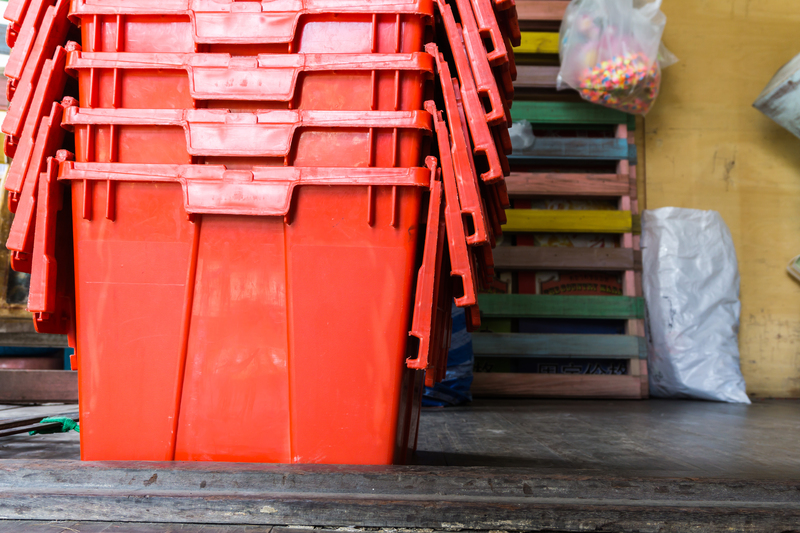Essential Guidelines for Storing Your Freezer Safely
Storing your freezer safely is crucial for maintaining food quality, preventing spoilage, and ensuring your appliance runs efficiently. Whether you're stocking up during a sale or preparing meals in advance, following the right freezer storage practices protects your food and your investment. In this comprehensive article, we'll cover must-know tips, organizational hacks, and safety recommendations to help you master the art of safe freezer storage.
Why Safe Freezer Storage Matters
Practicing safe freezer storage isn't only about maximizing space. Ensuring safety extends the life of your frozen foods, reduces food waste, maintains nutrition, and prevents dangerous foodborne illnesses. Understanding safe freezer practices also helps you save money and reduce energy costs.
Key Risks of Poor Freezer Storage
- Freezer Burn: Improper storage leads to moisture loss and off-flavors.
- Bacterial Growth: Fluctuating temperatures can make food unsafe even in the freezer.
- Food Mix-Ups: Lack of organization increases the risk of eating expired items.
- Inefficiency: Overstuffed freezers work harder, raising electricity bills and shortening appliance lifespan.
With these risks in mind, let's explore the best guidelines for storing your freezer safely.

1. Preparing Food for Freezing
Choose the Freshest Ingredients
Always freeze food while it's at its freshest. The quality you freeze is the quality you'll thaw. Avoid freezing leftovers on their last legs, as freezing doesn't improve taste or texture.
Portion Wisely
Divide large quantities into meal-size portions. This makes thawing easier and reduces waste, as you only defrost what you'll use.
Cool Food Properly Before Freezing
- Let hot food cool to room temperature but do not leave it out longer than two hours.
- Placing hot food directly in the freezer can raise the freezer's temperature, risking other foods.
2. Packaging for Safe Freezer Storage
The Importance of Packaging
Proper packaging prevents freezer burn, maintains flavor, and protects food from odors. Choose packaging designed for freezing, such as:
- Heavy-duty freezer bags
- Plastic or glass freezer-safe containers
- Aluminum foil or freezer wrap
Tips for Effective Packaging
- Remove as much air as possible to prevent frostbite and freezer burn.
- Label each item with the name and freeze date for easy tracking.
- Seal all packages tightly to prevent contamination and moisture loss.
3. Organizing Your Freezer for Safety and Efficiency
Keep a Systematic Layout
Organizing your freezer not only makes it easier to locate foods but also contributes to safe storage practices. Try the following tips:
- Designate zones for meats, vegetables, prepared meals, and baked goods.
- Practice FIFO (First In, First Out)--store newer items behind older ones.
- Group similar items together for easy access.
Utilize Containers and Baskets
Use bins or baskets to group items and keep small packages from getting lost. Clear containers help you see contents at a glance.
Do Not Overcrowd
Overfilling restricts air flow, making the freezer less efficient and increasing the chance of uneven freezing. Leave a small space between items for circulation.
4. Ideal Freezer Temperature and Maintenance
Set the Correct Temperature
The U.S. Food & Drug Administration (FDA) recommends keeping your freezer at 0°F (-18°C) or lower. This temperature ensures food safety and preserves quality for the long term.
Monitor with a Thermometer
- Place a freezer thermometer in a central location for accurate readings.
- Check the temperature regularly; adjust settings as needed, especially in warm months or after power outages.
Defrost Regularly
Modern freezers may be frost-free, but if yours isn't, defrost when ice buildup reaches 1/4 inch. Excess frost can reduce efficiency and available space.
5. Food Safety Guidelines for Freezer Storage
Safe Freezing Times
The shelf life of frozen food varies. Here are some general guidelines for maximum quality:
- Meat and poultry: 4-12 months
- Fish: 3-6 months
- Vegetables: 8-12 months
- Baked goods: 2-6 months
- Cooked meals: 2-3 months
While most foods remain safe indefinitely below 0°F, taste and texture diminish over time.
Foods Not Recommended for Freezing
- Leafy greens: Unless blanched first, they wilt and become mushy.
- Eggs in shell: May crack and become unsafe.
- Dairy products: Creamy textures often separate or curdle after freezing and thawing.
- Fresh fruits with high water content: Watermelon, oranges, and similar fruits can become mushy.
Thawing Frozen Foods Safely
- In the refrigerator: Safest method. Plan ahead as this can take hours or overnight.
- In cold water: Place food in a sealed bag; submerge in cold water and change water every 30 minutes.
- In the microwave: Only if you plan to cook immediately after thawing.
Never thaw foods at room temperature as this increases the risk of bacteria multiplying on the food's surface.
6. Energy- and Cost-Saving Freezer Tips
Fill but Don't Overfill
Freezers run most efficiently when about three-quarters full. If empty, use frozen water bottles to fill space and help maintain temperature during power outages.
Keep the Freezer Closed
Frequent opening raises the temperature and forces the freezer to work harder. Decide what you need before opening the door, and always close it securely afterward.
Defrost Smartly
Whenever you defrost your freezer, use the opportunity to reorganize, discard old food, and inspect for spills or leaks.
7. Labeling: Your Best Friend for Safe Freezer Storage
How to Label Correctly
- Use freezer-safe labels or masking tape with a permanent marker.
- Include the name of the item and the date frozen.
- Add reheating/cooking instructions if necessary for prepared meals.
Benefits of Proper Labeling
- Prevents food waste by allowing easy identification of items.
- Reduces the risk of consuming expired or poor-quality food.
- Makes meal planning and prep faster and more efficient.
8. Cleaning Your Freezer: A Safety Must
Regular Cleaning Routine
- Empty Your Freezer: Transfer food to a cooler or another freezer.
- Unplug and Defrost: Let ice melt naturally, or use a pan of hot water to speed up the process.
- Wash Surfaces: Use a solution of baking soda and water (not harsh chemicals).
- Dry Thoroughly: Moisture can lead to ice buildup and odors.
- Plug In and Reload: Wait until cold before restocking food.
Best Practices
Clean out your freezer at least twice a year, or when you notice odors, spills, or accumulating frost. Regular maintenance keeps your food safe and your appliance running smoothly.
9. Safe Stacking and Storage Methods
Stack with Safety
When stacking food, start with heavier items at the bottom and lighter foods on top. Avoid pressing packages too tightly together to allow for airflow. Group similar items to prevent crushing and cross-contamination (especially with raw meats).
Use Flat Freezing
For sauces, soups, or liquids, freeze in a flat layer in freezer bags. This saves space and makes thawing quicker and more uniform.
Separate Raw and Cooked Foods
Never store raw meats above ready-to-eat foods to avoid drips. Ideally, raw meats go at the bottom of your freezer.
10. Dealing with Power Outages
How to Handle Outages
- Keep the freezer door shut to maintain cold air.
- A full freezer can keep food frozen for up to 48 hours; half-full, about 24 hours.
- Use a thermometer to check food once power returns: If above 40°F (4°C) for more than two hours, discard perishable foods.

11. Common Mistakes to Avoid
- Freezing food without proper packaging
- Forgetting to label and date frozen items
- Overpacking or underfilling the freezer
- Ignoring organization or stacking raw meats above other foods
- Failing to monitor the freezer temperature
Conclusion: Take Control of Your Freezer Storage for Safety
Practicing essential guidelines for storing your freezer safely not only preserves your food and upholds its quality but also protects your family's health and saves you time and money. Always prioritize proper packaging, smart organization, correct labeling, regular maintenance, and safe thawing methods.
Storing your freezer safely is a habit that pays off every day. By following these comprehensive tips, you can confidently fill your freezer, knowing your food will be tasty, nutritious, and safe when you need it most.
Stay safe, stay organized, and make the most of your freezer!